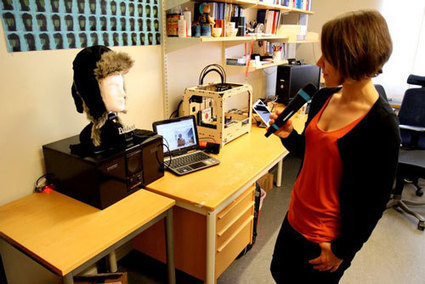Human interaction with robots is about to get a little more personal. Meet 'Furhat', the face of tomorrow's interactive technology.
An increasingly important – and sometimes frustrating – part of daily life is dealing with so-called “user interfaces”. Whether it’s a smartphone or an airport check-in system, the user’s ability to get what they want out of the machine relies on their own adaptability to unfamiliar interfaces.
But what if you could simply talk to a machine the way you talk to a human being? And what if the machine could also ask you questions, or even address two different people at once?
These kinds of interactive abilities are being developed at KTH Royal Institute of Technology with the help of an award-winning robotic head that takes its name from the fur hat it wears.
With a computer-generated, animated face that is rear-projected on a 3D mask, Furhat is actually a platform for testing various interactive technologies, such as speech synthesis, speech recognition and eye-tracking. The robot can conduct conversations with multiple people, turning its head and looking each person straight in the eye, while moving its animated lips in synch with its words.
Furhat’s ability to turn its face to multiple people in a conversation is enabled by face-tracking software. But its ability to make eye contact is achieved through projection.
Unlike a 2D image, which can appear to be looking at everybody in the room at once – a phenomenon known as the “Mona Lisa effect” – Furhat appears to shift its gaze because the face is projected onto 3D-printed model of a human face.“When we first experimented with this, the effect was strong immediately,” Al Moubayed says. “You could bond with, or relate to, the face.“It is an avatar that can really be present in the physical environment.”
Such technologies are being explored as a potential therapeutic tool for children with autism and other disorders that affect social interaction, he says. The technology can also be used for telepresence applications in which 3D replicas of people’s faces become the screens that we look at when conducting a video conference call.
more at http://www.nanowerk.com/news2/robotics/newsid=33519.php



 Your new post is loading...
Your new post is loading...







